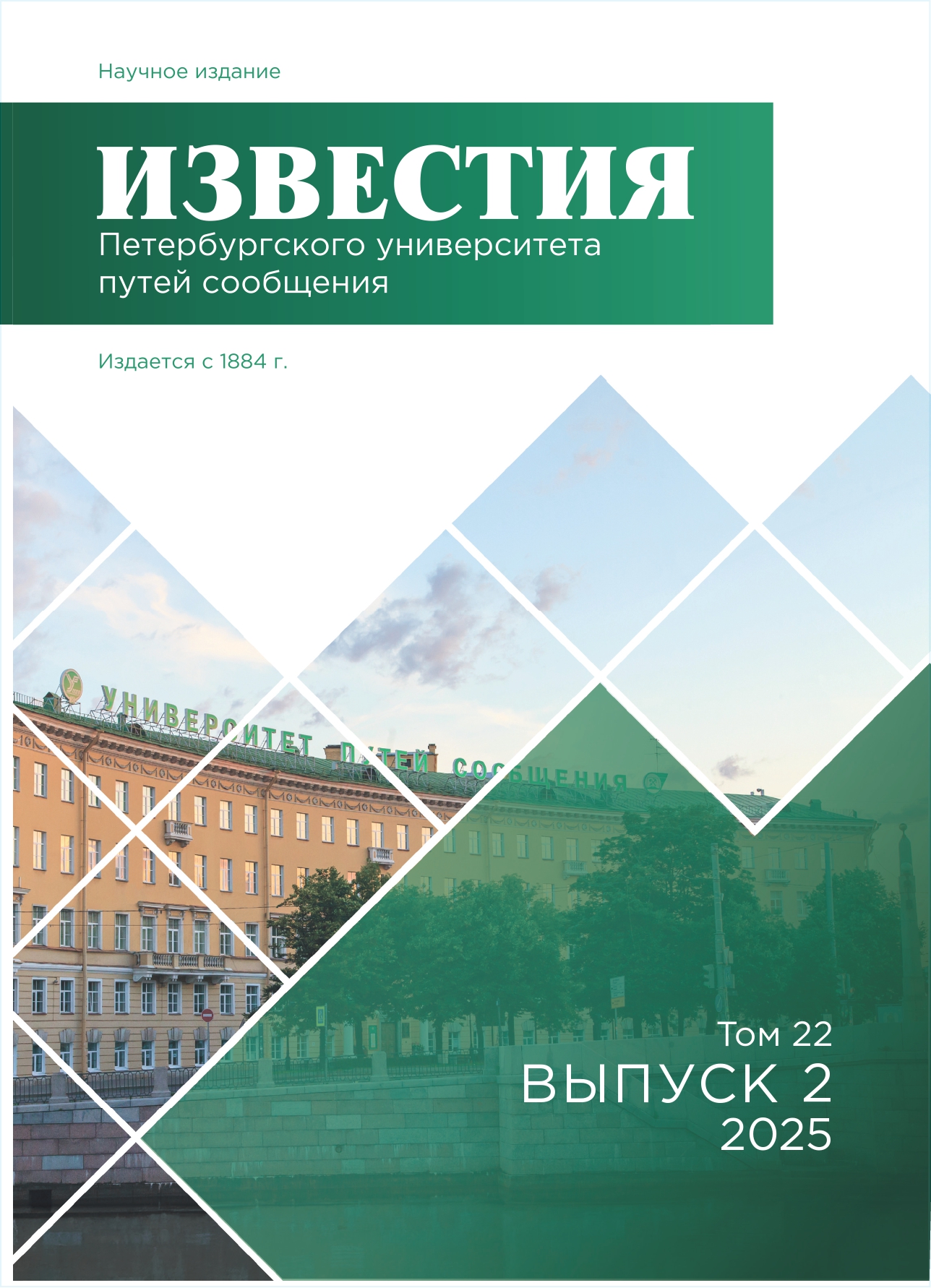Nizhny Novgorod State University of Architecture and Civil Engineering (NNGASU)
Russian Federation
UDC 625.7
In the context of road survey with laser scanning technology, the identification of road structure elements and rutting using point clouds poses a significant challenge. In practice, it is not always feasible to perform scanning in accordance with all the established rules. This is due to the fact that point clouds may contain a significant amount of noise, and in certain areas, a lack of point density precludes the utilization of automatic classification algorithms. Furthermore, the complexity and lack of optimization of a number of algorithms often necessitates the limitation of the data researched and the significant consumption of available computer hardware resources. Consequently, the processing of the data is predominantly manual. Purpose: A method for identifying sloping/vertical structures and rutting should be developed. This method should be based on slope analysis between neighbouring cloud points. The focus should be on big data performance and the predictive value of hardware computing resource consumption. Methods: The present study employs point cloud transformation in conjunction with land classification according to the CSF algorithm. The method under consideration was implemented in the C++ programming language as an add-on to nanoCAD system of automated design (SAD) for working with point clouds in its environment. The GEOS open source geometry library was used as an auxiliary tool for the generation of contour. The validation of the proposed method was carried out by laser scanning inspection of St. Petersburg roads. Practical significance: The computational complexity of the method is dependent to a quadratic degree on the size of the point cloud, whilst remaining independent of its volume, a property that facilitates its application in the processing of lower quality point clouds. Results: A user is provided with a set of polygons (closed contours) for the required slope values, with the option of drawing polygons of a specified area.
Motorways, ruts, point clouds, road maintenance, laser scanners, point cloud classification
1. Beregovoy D. V. Sozdanie topograficheskih planov na osnove dannyh s'emki s bespilotnogo letatel'nogo apparata i avtomatizacii processa deshifrirovaniya: special'nost' 25.00.32 «Geodeziya»: diss. … kand. nauk / D. V. Beregovoy. — SPb.: Sankt-Peterburgskiy gornyy universitet, 2018.
2. Tkacheva A. Ispol'zovanie dannyh distancionnogo zondirovaniya zemli pri trehmernom modelirovanii estestvennyh landshaftnyh scen / A. Tkacheva // Vestnik sibirskogo gosudarstvennogo aerokosmicheskogo universiteta im. akademika M. F. Reshetneva. — 2014. — № 5(57). — S. 136–144.
3. Fedorova A. A. Sravnenie metodov klassifikacii oblakov tochek, poluchennyh s pomosch'yu tehnologii LIDAR / A. A. Fedorova, D. D. Nurlyeva, A. S. Zhelankina, E. A. Eliseeva i dr. // Iskusstvennyy intellekt v avtomatizirovannyh sistemah upravleniya i obrabotki dannyh, 27–28 aprelya 2022 goda. — M.: Moskovskiy gosudarstvennyy tehnicheskiy universitet imeni N. E. Baumana (nacional'nyy issledovatel'skiy universitet), 2022. — T. 1. — S. 262–267.
4. Masuradze Sh. G. Reshenie inzhenernyh dorozhnyh zadach na osnove dannyh mobil'nogo lazernogo skanirovaniya / Sh. G. Masuradze, I. G. Maysuradze // SAPR i GIS avtomobil'nyh dorog. — 2016. — № 2(7). — S. 50–53. — DOI:https://doi.org/10.17273/CADGIS.2016.2.2.
5. Poznyak I. Metod ocenki koleynosti avtomobil'nyh dorog s ispol'zovaniem mobil'nogo lazernogo skanirovaniya / I. Poznyak, I. Masuradze, Sh. Masuradze // Konstruktorskoe Byuro. — 2017. — № 5.
6. Men'shikov A. Fotogrammetricheskiy metod izmereniya koleynosti usovershenstvovannyh dorozhnyh pokrytiy / A. Men'shikov, N. Skomorohova // Nauka, tehnika i obrazovanie. — 2016. — № 7(25). — S. 48–49. — DOI:https://doi.org/10.20861/2312-8267-2016-25-002.
7. Lushnikov N. Izmerenie glubiny kolei na pokrytii avtomobil'noy dorogi metodom lazernogo skanirovaniya / N. Lushnikov, P. Lushnikov, T. Lalova, D. Kovalev // Dorogi i mosty. — 2020. — № 2(44). — S. 138–144.
8. Grebenyuk E. A. Mobil'noe lazernoe skanirovanie gorodskih dorog: ocenka trudozatrat dlya polucheniya kachestvennogo rezul'tata / E. A. Grebenyuk, S. I. Rotkov // Trudy Mezhdunarodnoy konferencii po komp'yuternoy grafike i zreniyu «Grafikon», 19–21 sentyabrya 2023 g., Institut problem upravleniya im. V. A. Trapeznikova RAN. — M.: Institut prikladnoy matematiki im. M. V. Keldysha RAN, 2023. — S. 701–709. — DOI:https://doi.org/10.20948/graphicon-2023-701-709.
9. Wumming Z. An Easy-to-Use Airborne LiDAR Data Filtering Method Based on Cloth Simulation / Z. Wumming, Q. Jianbo, W. Peng et al. // Remote Sensing. — 2016. — Vol. 8(6). — DOI:https://doi.org/10.3390/rs8060501.
10. Zhiyang Z. P-CSF Polar coordinate cloth simulation filtering algorithm for multi-type tunnel point clouds / Z. Zhiyang, C. Bingtao, L. Yuan et al. // Tunnelling and Underground Space Technology. — 2025. — Vol. 155. — Part 1. — DOI:https://doi.org/10.1016/j.tust.2024.106144.
11. Vystrchil M. G. Algoritm vydeleniya tochek zemnoy poverhnosti iz dannyh vozdushnogo lazernogo skanirovaniya / M. G. Vystrchil, T. I. Baltyzhakova, A. Yu. Romanchikov, A. A. Anikeeva // Geodeziya i kartografiya. — 2024. — № 2. — S. 2–11. — DOI:https://doi.org/10.22389/0016-7126- 2024-1004-2-2-11.









